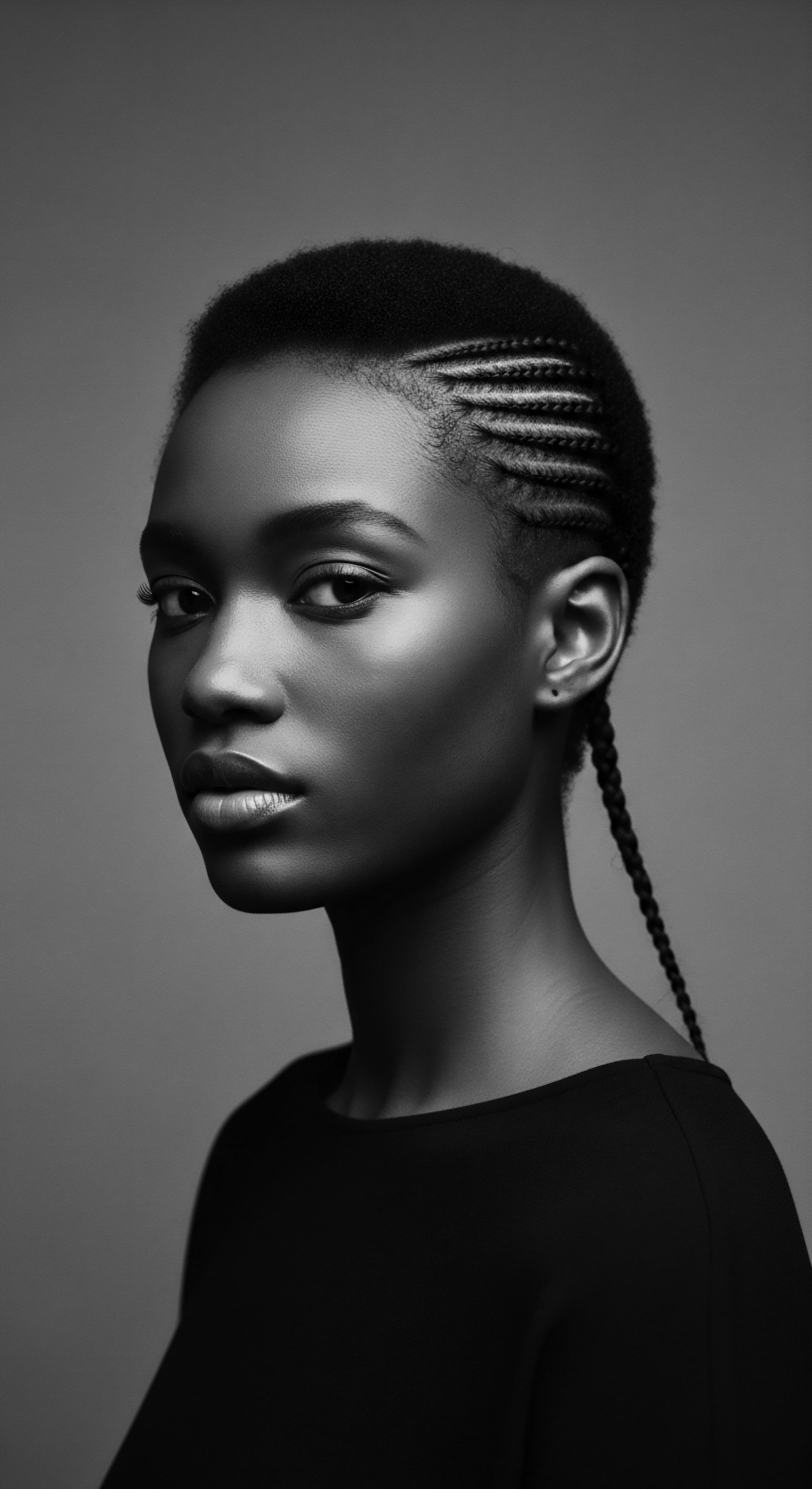
Roots
In the quiet contemplation of a single strand of textured hair, we discover a world, a history, a living archive of identity and resilience. Each curve, each coil, holds not only its biological blueprint but also the whispers of ancestral wisdom and journeys. To ponder the query, “Can traditional diets enhance textured hair health?” is to embark on a shared voyage into the depths of heritage, understanding that the vibrancy of our strands often mirrors the nourishment offered by the earth our forebears walked. This inquiry invites us to reconnect with ancient rhythms, to perceive our hair not as a mere aesthetic feature, but as a profound extension of our collective story, a story etched in the very cells of our being and fed by the sustenance of generations.
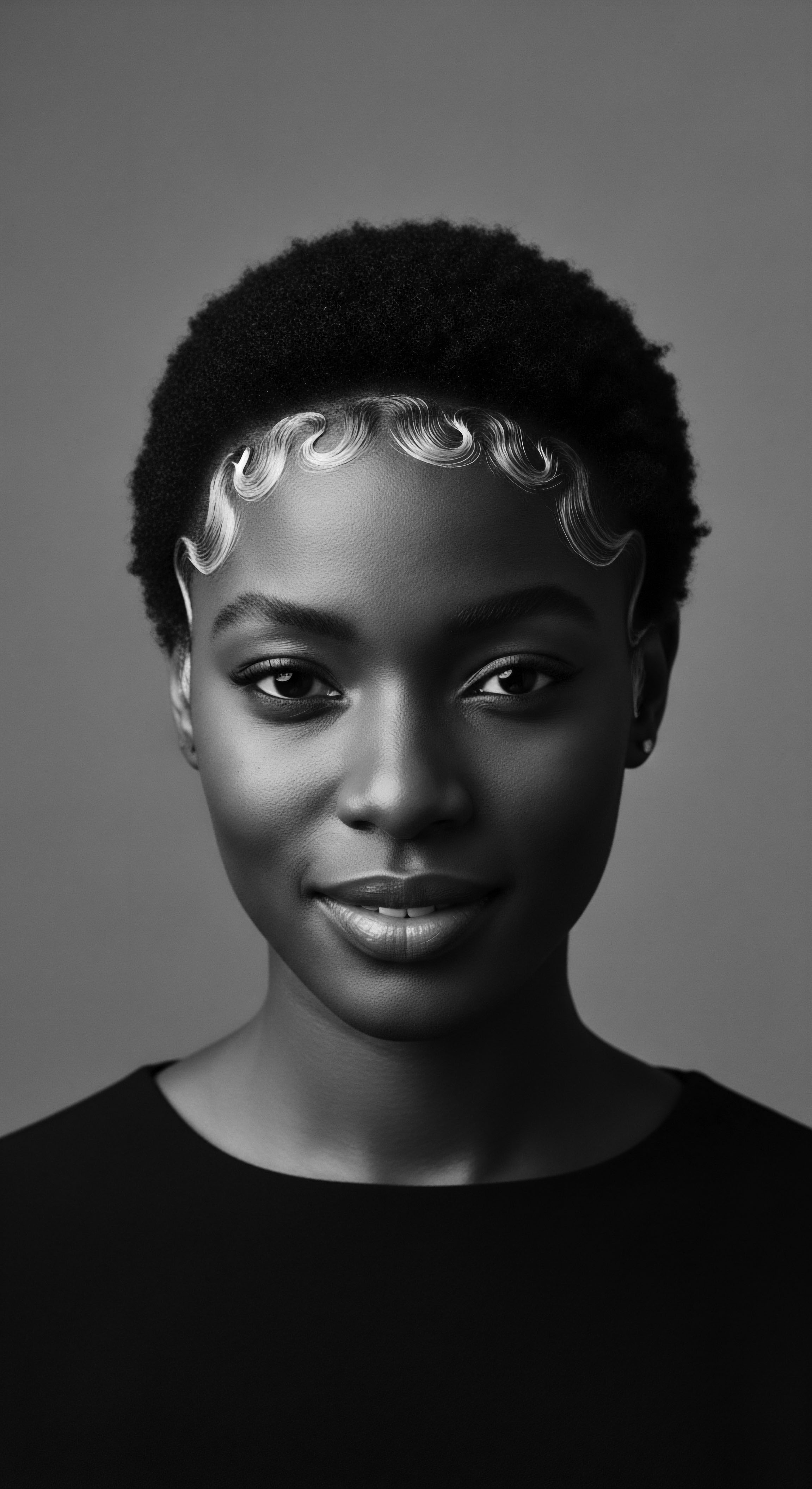
Anatomy of a Textured Strand
The intricate architecture of textured hair, often characterized by its unique elliptical follicle shape and varied curl patterns, distinguishes it from other hair types. This distinct geometry means that Afro-textured hair, for instance, possesses a higher density of disulfide bonds, contributing to its spring and strength. However, these structural features also lend themselves to specific susceptibilities, such as a greater propensity for dryness and breakage due to fewer cuticle layers and reduced ability for natural oils to travel down the coiled shaft. Understanding this elemental biology, passed down through genetic heritage, is the initial step in comprehending how nourishment from within plays an unparalleled role.
The medulla, a central core within the hair fiber, present in thicker hair, contributes to its volume, strength, elasticity, and overall texture. This internal structure also plays a role in thermoregulation and sheen, influenced by its lipid content. Modern science, in its ongoing exploration, often validates observations held by ancestral communities for countless generations—that hair is a dynamic, living entity responding to internal and external influences.
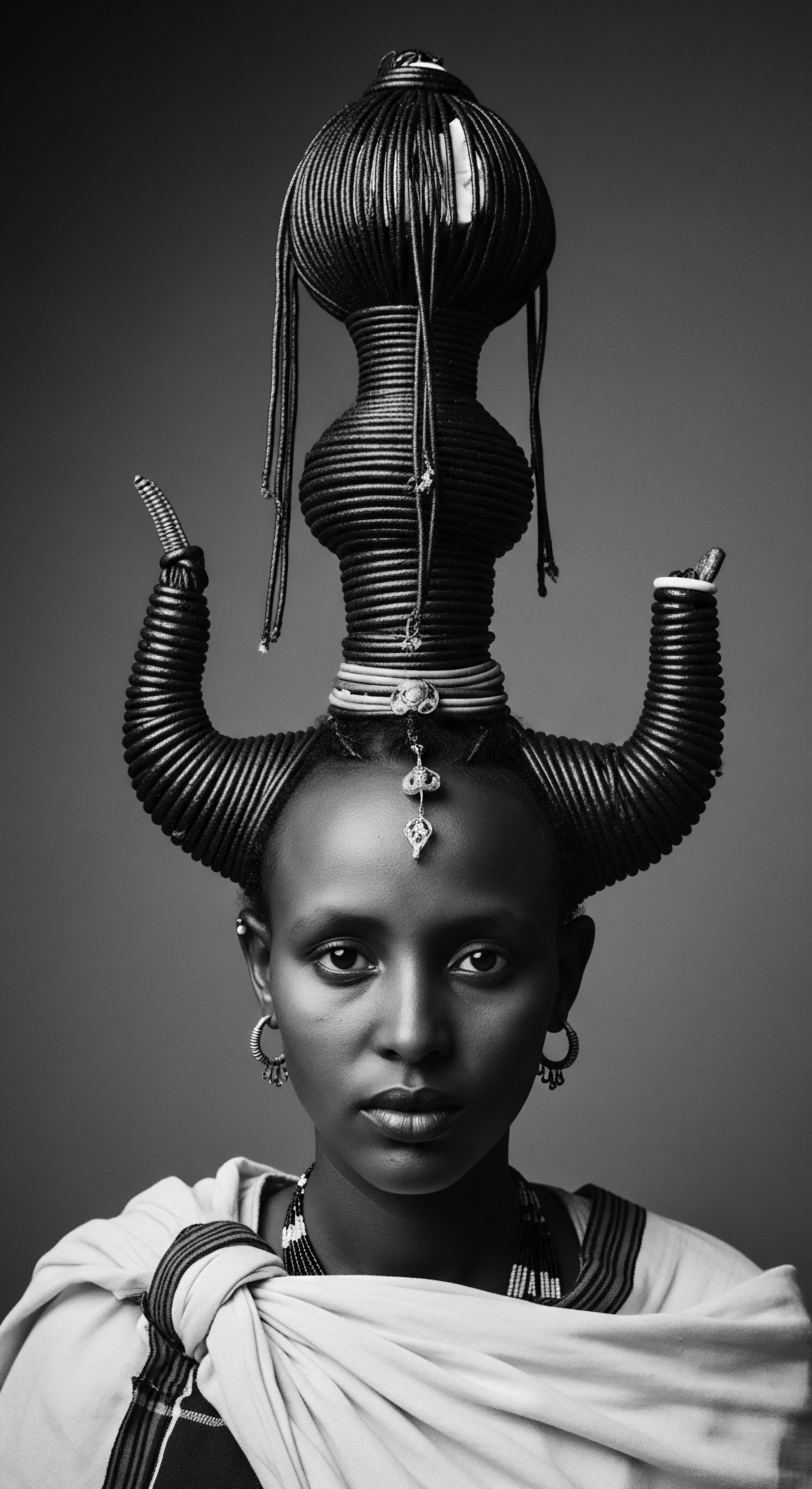
The Language of Hair and Sustenance
Across diverse cultures with textured hair heritage, a rich lexicon exists, describing not only hair types and styles but also the traditional practices that support their vitality. These historical terminologies often reflect a deep, intuitive understanding of hair’s relationship to overall bodily wellbeing, intrinsically linked to dietary practices. For generations, communities relied on a sophisticated understanding of local flora and fauna, consuming foods that naturally provided the building blocks for strong, vibrant hair. This foundational knowledge, woven into daily life, predates contemporary scientific classifications yet aligns with many of its findings.
The essence of textured hair health begins not with products, but with the earth’s bounty, a truth echoed across generations of ancestral wisdom.

Dietary Echoes from Ancestral Lands
From the nutrient-dense traditional diets of various African communities to the foodways of Indigenous peoples across the globe, patterns emerge that speak to a profound connection between what was consumed and the physical resilience, including hair health. Foods rich in essential nutrients—proteins, healthy fats, vitamins, and minerals—were the cornerstone of these traditional eating patterns. Consider the historical diets prevalent in many sub-Saharan African regions, which traditionally relied on diverse plant-based foods, lean proteins from wild game or fish, and nutrient-dense root vegetables.
Such diets would inherently supply crucial elements like iron, zinc, and a spectrum of B vitamins, all recognized today as critical for hair growth and follicle health. This ancestral wisdom of eating from the land was not merely about survival; it was about thriving, about maintaining a robust physical self, of which hair was an undeniable marker.
| Traditional Food Category Root Vegetables & Tubers (e.g. Yams, Cassava) |
| Ancestral Context and Region West Africa, Caribbean, Indigenous Americas ❉ Energy sources, dense nutrition. |
| Contemporary Nutritional Link to Hair Health Complex carbohydrates for hair growth energy; vitamins and minerals. |
| Traditional Food Category Leafy Greens (e.g. Collards, Kale, Callaloo) |
| Ancestral Context and Region African Diaspora, Southern US, Caribbean ❉ Staple vegetables. |
| Contemporary Nutritional Link to Hair Health Iron, Vitamin C, Vitamin K for oxygen transport and collagen synthesis. |
| Traditional Food Category Legumes & Grains (e.g. Black-eyed Peas, Millet, Fonio) |
| Ancestral Context and Region Various African regions ❉ Protein sources, dietary fiber. |
| Contemporary Nutritional Link to Hair Health Plant-based protein for keratin structure; biotin and B vitamins. |
| Traditional Food Category Fish & Marine Mammals |
| Ancestral Context and Region Coastal African, Indigenous North American (Yup'ik) ❉ High-quality protein, fatty acids. |
| Contemporary Nutritional Link to Hair Health Omega-3 fatty acids for scalp health; protein for hair structure. |
| Traditional Food Category This table illustrates the deep nutritional intelligence embedded within traditional foodways, directly supporting hair vitality. |
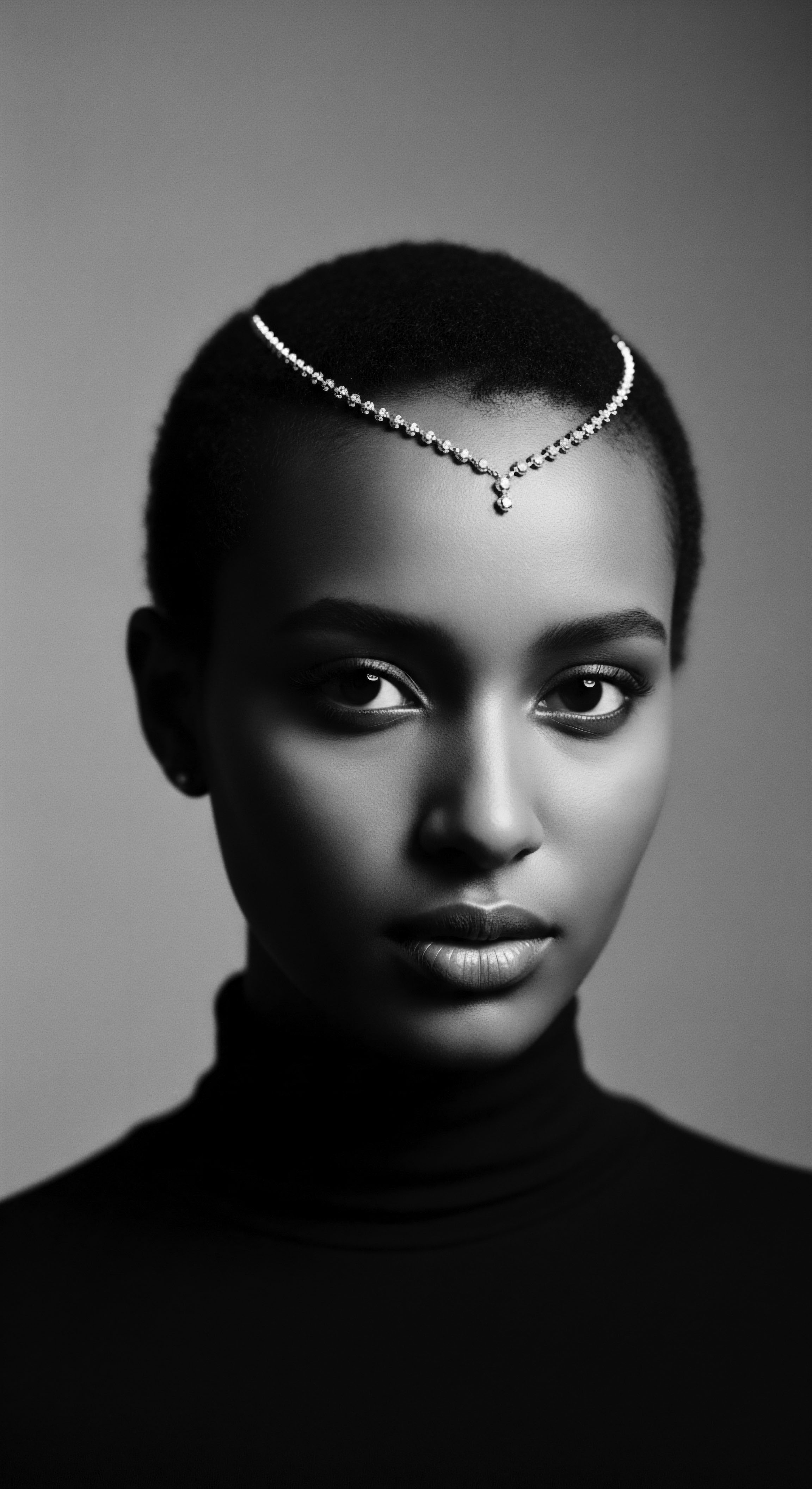
Ritual
The journey of textured hair care, in its truest form, is a ritual—a series of intentional acts passed down through hands and oral traditions, steeped in cultural meaning. These rituals, whether daily practices or special preparations, were never isolated acts of beautification. They were deeply intertwined with overall wellbeing, a holistic approach where internal nourishment met external care. The question of how traditional diets might enhance textured hair health finds its living answer within these enduring rituals, reflecting centuries of communal knowledge.
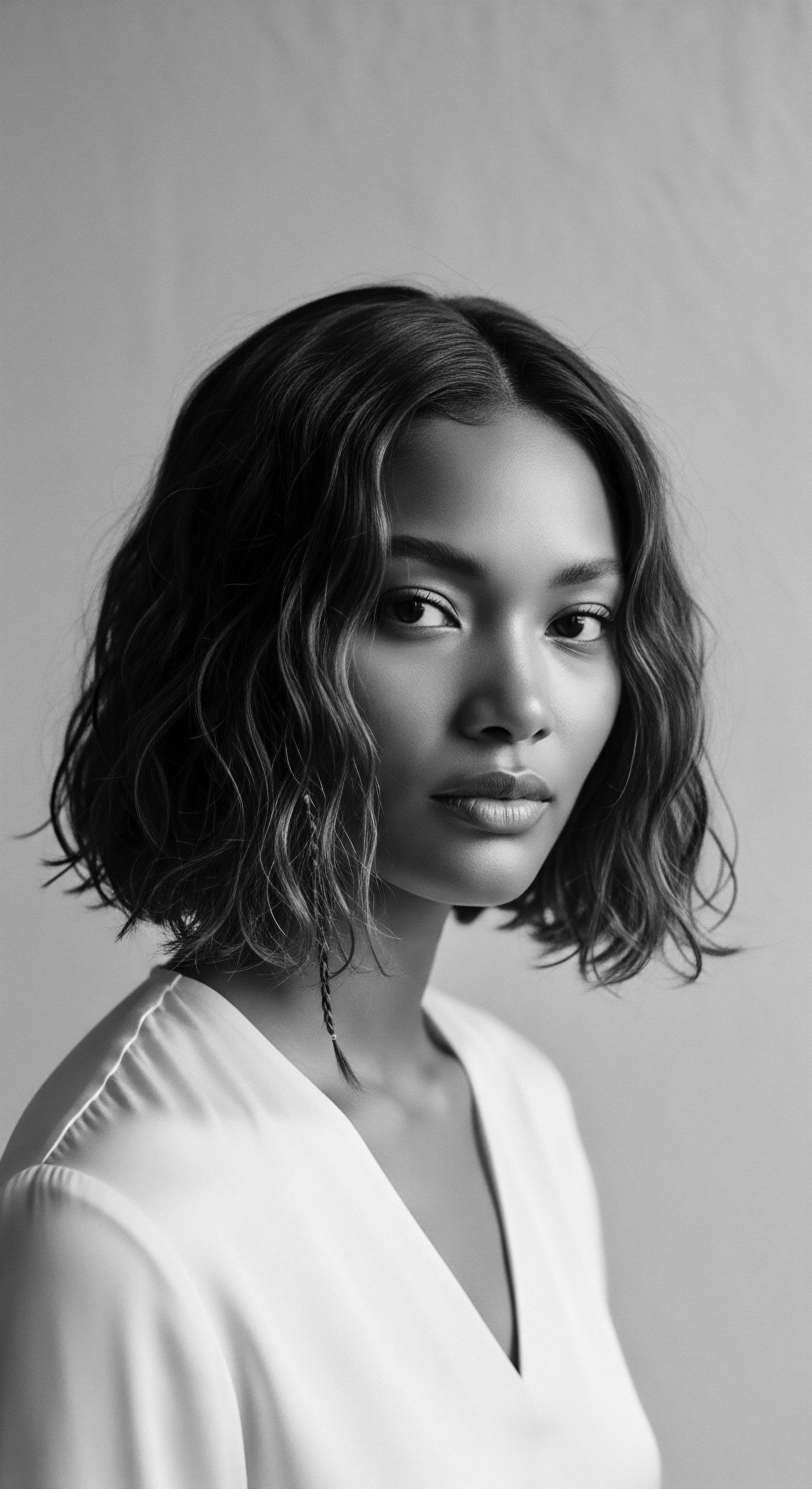
The Styling Hand and Its Nourishment
Traditional styling for textured hair often involved methods that prioritized preservation and minimized manipulation, allowing strands to retain moisture and strength. Protective styles such as braids, twists, and cornrows, with deep roots in African heritage, were not merely decorative. They served practical purposes, shielding the hair from environmental elements and reducing daily wear. The efficacy of these styles was, and remains, greatly influenced by the internal state of the hair—its inherent resilience and hydration, a direct reflection of dietary intake.
Within these practices, the application of various oils and butters was common. Shea butter, a long-standing staple in West Africa, historically used for both skin and hair, is rich in fatty acids and vitamins that protect hair from environmental stressors. Similarly, coconut oil, used in Ayurvedic practices in India, or Jamaican black castor oil in the Caribbean, have been centuries-old methods for nourishing the scalp and strengthening hair. While often applied topically, the effectiveness of these external treatments can be amplified when the hair structure itself is robust, built from a nutrient-rich internal environment.

What Were the Foundational Hair Preparations in Ancestral Communities?
Ancestral hair care often involved plant-based concoctions and infusions, prepared from readily available local botanicals. In many African cultures, plants were not only consumed for health but also used externally for hair and scalp wellness. A review on the cosmetopoeia of African plants notes that 68 species were identified as traditional treatments for various hair conditions like alopecia and dandruff, with a significant portion (58 species) also possessing potential antidiabetic properties when taken orally. This suggests an intuitive understanding of the systemic connection between internal health and external hair presentation.
- Botanical Cleansers ❉ Early societies employed natural agents like saponins from certain barks or leaves (e.g. soap nut) to gently cleanse hair without stripping its vital oils.
- Herbal Rinses ❉ Infusions of herbs such as rosemary, nettle, or specific African plants provided conditioning and promoted scalp circulation.
- Nutrient-Rich Oils ❉ Oils pressed from indigenous seeds, nuts, or fruits (like palm oil in West Africa or argan oil in North Africa) served as foundational moisturizers and sealants.

The Sacred Exchange of Care
Hair care in pre-colonial Africa was often a communal activity, a time for social bonding and the transmission of knowledge across generations. These shared rituals, performed by mothers, aunties, and elders, were moments of intimate instruction, not only on technique but also on the reverence for one’s hair and its connection to community and lineage. The narratives shared during these sessions often included wisdom on holistic living, which naturally encompassed dietary practices.
The health of the hair was seen as a reflection of the health of the individual and, by extension, the health of the community. A vibrant head of hair signaled vitality, well-being, and often, status.
Traditional hair care was a communal language, where skilled hands and shared wisdom fortified both strands and spirit.
The transition from a diet of whole, unprocessed foods to one heavily influenced by colonial agricultural practices brought notable changes. For instance, the “decolonized diet” movement highlights how many “traditional” African American dishes originated from the scraps and leftovers provided during slavery, leading to foodways often high in fats and salt, which contrasts sharply with ancestral West African cuisine based on plant foods, lean proteins, and healthy oils. This shift, historically documented, undoubtedly impacted the systemic health of individuals, likely affecting hair vitality in turn.

Relay
The legacy of our hair, from its genesis in the follicle to its expression in myriad styles, is a continuous relay—a passing of ancestral wisdom through the present to shape a healthier future. The question of whether traditional diets can enhance textured hair health becomes even more compelling when we examine the scientific underpinnings that validate historical practices and how these truths can be applied today. This section bridges the ancient with the contemporary, examining how the knowledge of diet’s impact on hair health, deeply embedded in heritage, continues to inform and guide us.

The Biological Blueprint of Dietary Influence
Our hair, like every other part of our being, is constructed from the nutrients we absorb. The complex protein keratin, the primary component of hair, requires a steady supply of amino acids, derived from protein-rich foods. Collagen, too, plays a structural role and its production relies on adequate Vitamin C.
Beyond structure, the vitality of hair follicles, the tiny organs responsible for hair growth, depends on a spectrum of micronutrients. Iron ensures oxygen delivery to these follicles; zinc is vital for tissue growth and repair; B vitamins, particularly biotin and folate, are indispensable for cellular metabolism and red blood cell formation, which carry oxygen and nutrients to the scalp.
Traditional diets, by their very nature, were often nutrient-dense, emphasizing whole, unprocessed foods. This stands in stark contrast to many contemporary Western diets, often characterized by refined sugars, processed ingredients, and an imbalance of essential nutrients. The anthropological understanding of hair diversity, acknowledging unique adaptations to environments, also includes recognition of how nutritional landscapes shaped the health and characteristics of hair across populations.

How Does Modern Research Validate Ancestral Dietary Practices for Hair?
Contemporary scientific investigations increasingly corroborate the efficacy of dietary patterns and specific ingredients long celebrated in ancestral health systems. For instance, a study on traditional Native American populations in the Northwest Territories, Canada, revealed that those who consumed more traditional foods, such as fish and marine mammals, exhibited better diet quality and improved dietary adequacy, with higher intakes of protein, niacin, vitamin B12, iron, selenium, zinc, and omega-3 fatty acids. These same nutrients are precisely what dermatological and nutritional science identifies as fundamental for hair vitality and preventing issues like shedding or stunted growth.
Similarly, research on African medicinal plants used for hair care often uncovers compounds that influence hair growth factors or possess anti-inflammatory and antioxidant properties, suggesting a direct biological benefit from ingredients consumed or applied traditionally. While many historical applications focused on topical remedies, the underlying nutritional framework provided by traditional diets for overall health would have created an optimal internal environment for hair to thrive.
- Protein Sources ❉ Historically, diets rich in lean meats, fish, or diverse legumes and grains provided the amino acids for keratin synthesis.
- Healthy Fats ❉ Essential fatty acids from sources like avocado, nuts, seeds, and certain oils (e.g. palm oil, shea butter, castor oil) maintained scalp hydration and hair flexibility.
- Vitamins and Minerals ❉ A wide range of fruits, vegetables, and whole grains delivered iron, zinc, B vitamins, and Vitamin C, crucial for cellular processes supporting hair follicles.

The Interconnectedness of Health and Hair
The connection between overall systemic health and hair appearance cannot be overstated. Hair is often a mirror reflecting internal well-being; deficiencies or imbalances within the body frequently manifest as changes in hair texture, growth, or loss. The rise in certain hair conditions in societies shifting to Western diets, for instance, has prompted theories linking dysregulated glucose metabolism to hair loss, suggesting that a return to more traditional, balanced foodways could offer preventive or supportive benefits.
The vitality of our hair acts as a living testament to the harmony within our bodies, reflecting the deeply rooted wisdom of ancestral nutrition.
This understanding forms the basis for building personalized textured hair regimens that draw from both ancestral wisdom and contemporary science. It highlights that true hair health is not a superficial pursuit but a holistic endeavor, recognizing the profound link between our plate, our heritage, and the glorious expression of our strands.

Reflection
To ask if traditional diets enhance textured hair health is to embark on a profound meditation on interconnectedness. It is to acknowledge that the radiant strength of a strand, the resilience of a curl, carries within it the very memory of generations past—a living heritage passed down not merely through genetic code, but through the sustenance that built our ancestors. We have journeyed through the foundational understanding of textured hair’s unique biology, recognized the echoes of ancient dietary wisdom in its structure, and observed how these truths persist and are validated by modern inquiry.
The ‘Soul of a Strand’ ethos reminds us that hair is more than just protein; it is a repository of identity, a canvas for expression, and a silent narrator of history. When we choose to nourish our bodies with foods that mirror the traditional patterns of our heritage, we are not merely consuming nutrients; we are participating in a living ritual. We are honoring the knowledge of those who came before us, whose profound understanding of the earth and its offerings sustained them.
This intentionality, this deep respect for the wisdom of the past, allows for a greater harmony within, manifesting as a vibrancy that truly shines from the root. Our textured hair, then, becomes a testament to enduring legacies, a symbol of resilience, and a luminous beacon guiding us back to the wellspring of ancestral well-being.
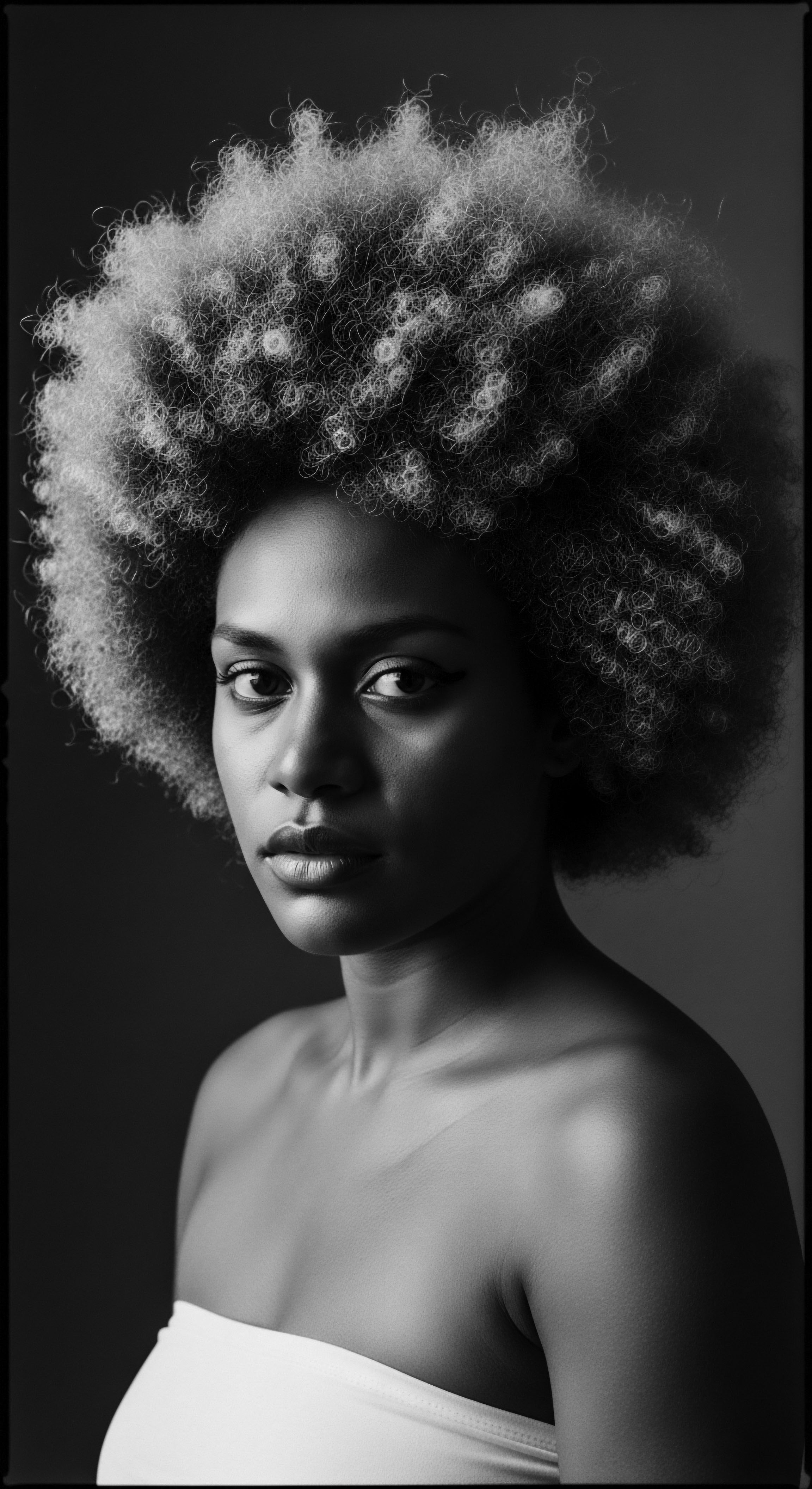
References
- Abbott Mihesuah, Devon. (2020). Recovering Our Ancestors’ Gardens. University of Nebraska Press.
- Alagbe, S. O. et al. (2024). Cosmetopoeia of African Plants in Hair Treatment and Care ❉ Topical Nutrition and the Antidiabetic Connection? Diversity, 16(2), 96.
- Davenport, J. (2022). Heavy is the Head ❉ Evolution of African Hair in America from the 17th c. to the 20th c. Library of Congress.
- Giacomoni, P. U. et al. (2019). The what, why and how of curly hair ❉ a review. International Journal of Cosmetic Science, 41(6), 522-529.
- Karam, A. et al. (2023). Ethnobotanical Survey of Medicinal Plants used in the Treatment and Care of Hair in Karia ba Mohamed (Northern Morocco). Journal of Pharmacy and Pharmacology, 11, 237-248.
- Ma, H. et al. (2019). Diet of traditional Native foods revealed in hair samples. UAF News and Information.
- Rai, K. A. et al. (2024). Indigenous varieties of plant based food and dietary habits of tribal women in Chhattisgarh. Journal of Ethnic Foods, 11(1), 1-13.
- St. Clair, L. et al. (2023). What Every Dermatologist Must Know About the History of Black Hair. Journal of Drugs in Dermatology, 22(11), 1055-1061.
- Vardhana, R. et al. (2023). The Genomic Variation in Textured Hair ❉ Implications in Developing a Holistic Hair Care Routine. Cosmetics, 10(6), 164.
- Virdi, J. (2022). It’s More Than “Just” Hair ❉ Revitalization of Black Identity. Folklife Magazine.
